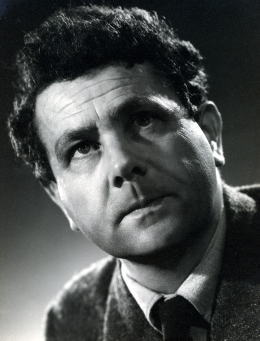
Gerald Raphael Finzi was a British composer. Finzi is best known as a choral composer, but also wrote in other genres. Large-scale compositions by Finzi include the cantata Dies natalis for solo voice and string orchestra, and his concertos for cello and clarinet.
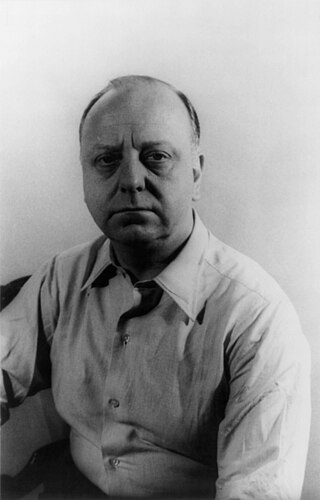
Virgil Thomson was an American composer and critic. He was instrumental in the development of the "American Sound" in classical music. He has been described as a modernist, a neoromantic, a neoclassicist, and a composer of "an Olympian blend of humanity and detachment" whose "expressive voice was always carefully muted" until his late opera Lord Byron which, in contrast to all his previous work, exhibited an emotional content that rises to "moments of real passion".
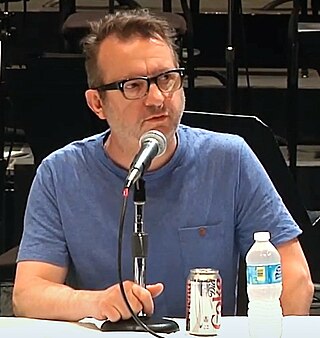
Mark-Anthony Turnage is an English composer of contemporary classical music.
Dies Natalis, Op. 8, is a five-movement solo cantata composed in 1938–1939 by the twentieth-century English composer Gerald Finzi (1901–1956). It is a solo vocal cantata scored for a solo soprano or tenor accompanied by string orchestra, and features settings of four texts by Thomas Traherne (1636/37–1674), a seventeenth-century English Metaphysical poet, priest and theologian.

Sir Arthur Somervell was an English composer and educationalist. After Hubert Parry, he was one of the most successful and influential writers of art song in the English music renaissance of the 1890s–1900s. According to Michael Hurd, his most important work is found in the five song cycles, particularly his settings of Tennyson in Maud (1898) and Housman in A Shropshire Lad (1904).
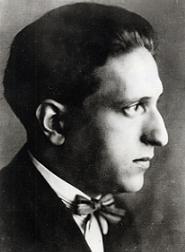
Pavel Haas was a Czech composer who was murdered during the Holocaust. He was an exponent of Leoš Janáček's school of composition, and also utilized elements of folk music and jazz. Although his output was not large, he is notable particularly for his song cycles and string quartets.
Jack Hamilton Beeson was an American composer. He was known particularly for his operas, the best known of which are Lizzie Borden, Hello Out There!, and The Sweet Bye and Bye.
Howard Ferguson was a British composer and musicologist from Belfast. He composed instrumental, chamber, orchestral and choral works. While his music is not widely known today, his Piano Sonata in F minor, Op. 8 and his Five Bagatelles, Op. 9, for piano are still performed. His works represent some of the most important 20th-century music to emerge from Northern Ireland.
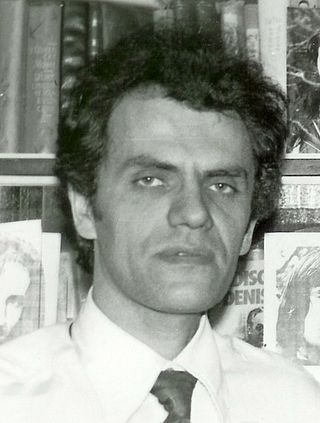
Alexander Kuzmich Vustin, also Voustin or Wustin was a Russian composer. His works, including the opera The Devil in Love, were played and recorded internationally.
The Sacconi Quartet is a UK-based classical music string quartet founded in 2001 by four graduates of the Royal College of Music, London, UK. The Quartet has achieved widespread recognition, having given recitals in leading British concert halls and at music festivals in Britain and across Europe. They have also won several major prizes in string quartet and chamber music competitions. The Quartet is named for the outstanding twentieth-century Italian violin maker and restorer Simone Sacconi, who wrote The Secrets of Stradivari a reference work for violin makers.

Reginald Owen Morris, known professionally and by his friends by his initials, as R.O. Morris, was a British composer and teacher.
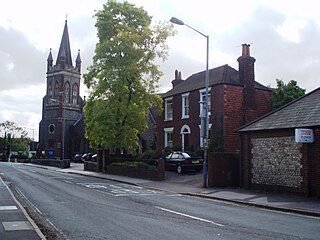
Wilfred Brown was an accomplished English tenor.
Roderick Gregory Coleman Williams OBE is a British baritone and composer.

On Wenlock Edge is a song cycle composed in 1909 by Ralph Vaughan Williams for tenor, piano and string quartet. The cycle comprises settings of six poems from A. E. Housman's 1896 collection A Shropshire Lad. A typical performance lasts around 22 minutes. It was premiered by Gervase Elwes, Frederick Kiddle and the Schwiller Quartet on 15 November 1909 in the Aeolian Hall, London. It was later orchestrated by the composer in a version first performed on 24 January 1924. Subsequent editions show a measure excised from the final movement (Clun): the third measure from the end. The Boosey and Hawkes 1946 score notes indicates this in a footnote on the last page. The cycle was recorded by Elwes, Kiddle and the London String Quartet in 1917.
Earth and Air and Rain is a song cycle for baritone and piano by Gerald Finzi (1901–56). It was composed between 1928 and 1935, and published in 1936 as his Op. 15. It consists of settings of ten poems by Thomas Hardy (1840–1928).
"The Oxen" is a poem by the English novelist and poet Thomas Hardy (1840–1928). It relates to a West Country legend: that, on the anniversary of Christ's Nativity, each Christmas Day, farm animals kneel in their stalls in homage. It was first published in December 1915, in the London newspaper The Times. It has been set to music several times.

Benjamin Britten's Five Flower Songs, Op. 47, is a set of five part songs to poems in English by four authors which mention flowers, composed for four voices (SATB) in 1950 as a gift for the 25th wedding anniversary of Leonard and Dorothy Elmhirst. It was first performed in the open air at the couple's estate Dartington Hall, with Imogen Holst conducting a student choir. The set has been frequently recorded by English and foreign chamber choirs and ensembles, including Polyphony, Cambridge Singers and the RIAS Kammerchor.











